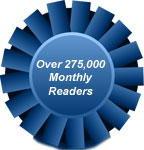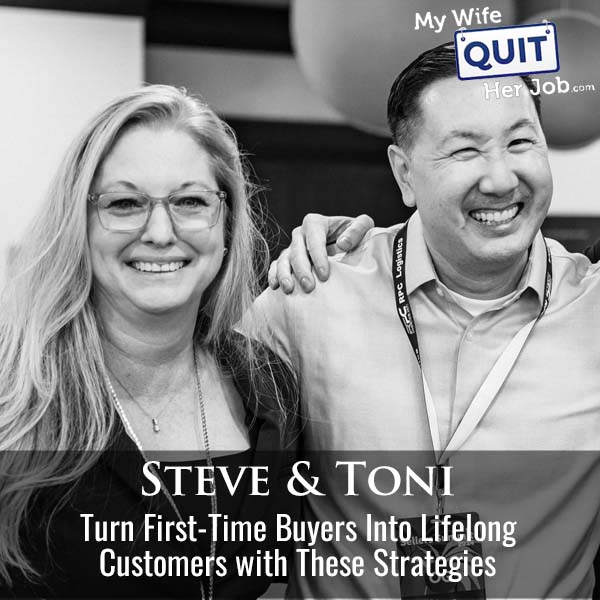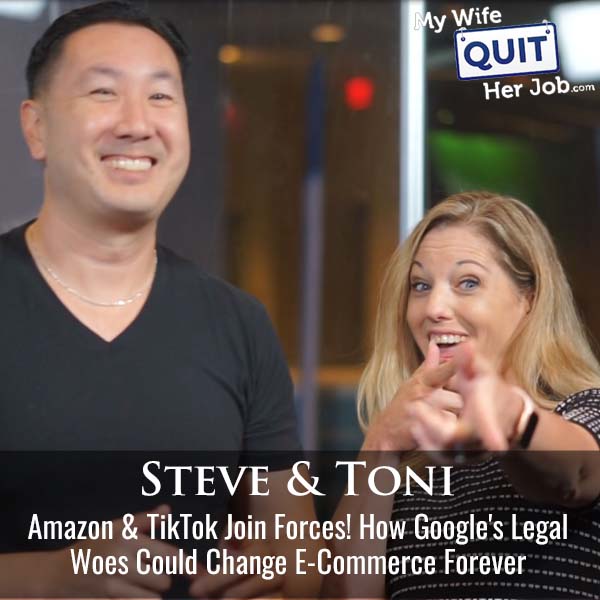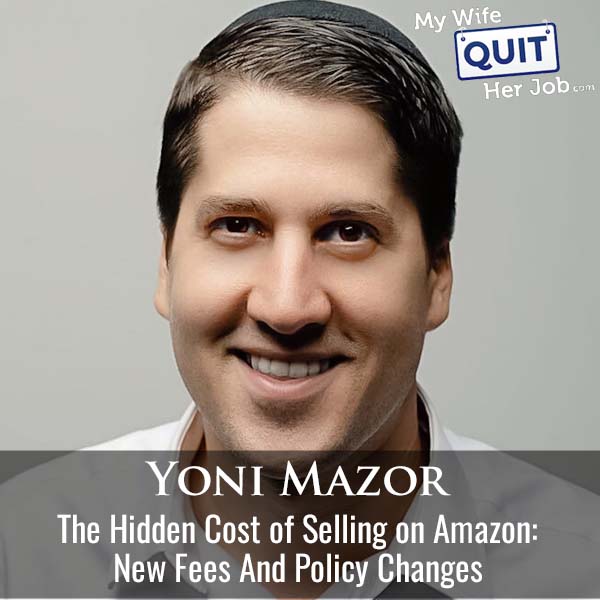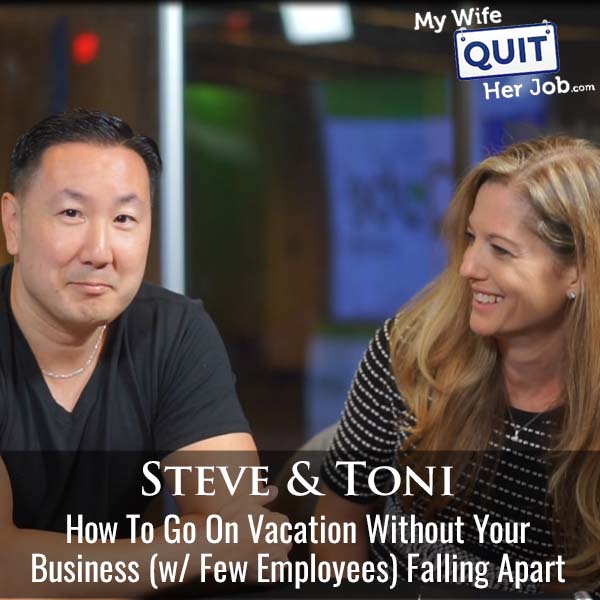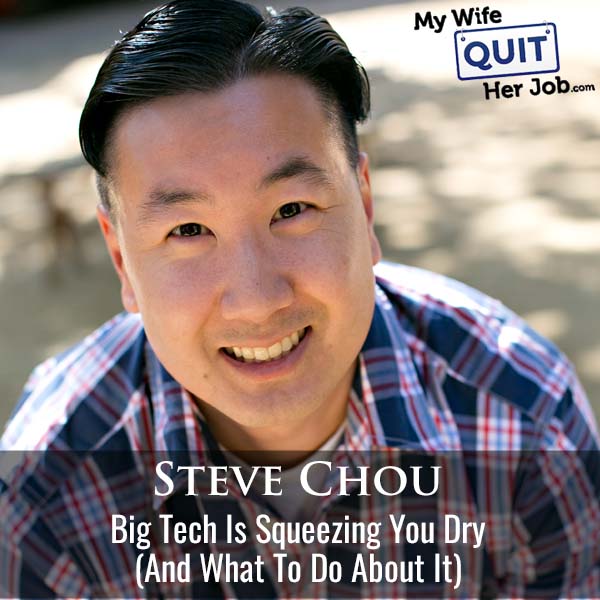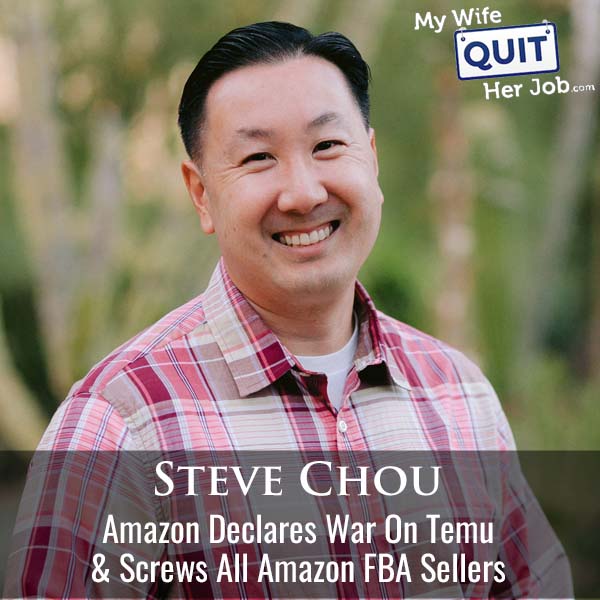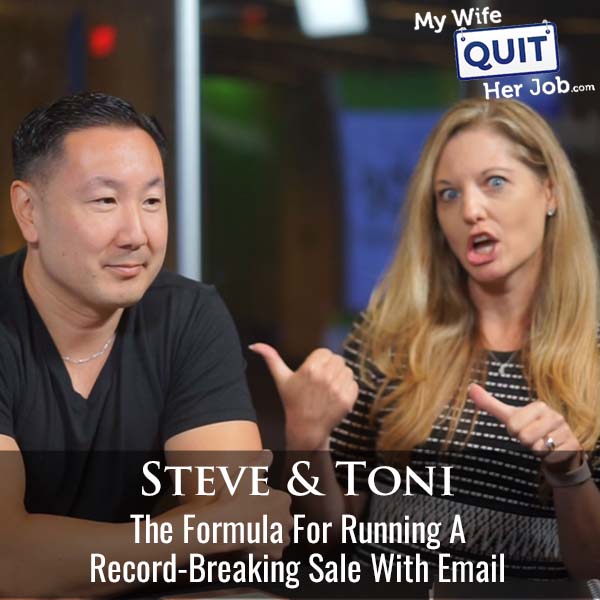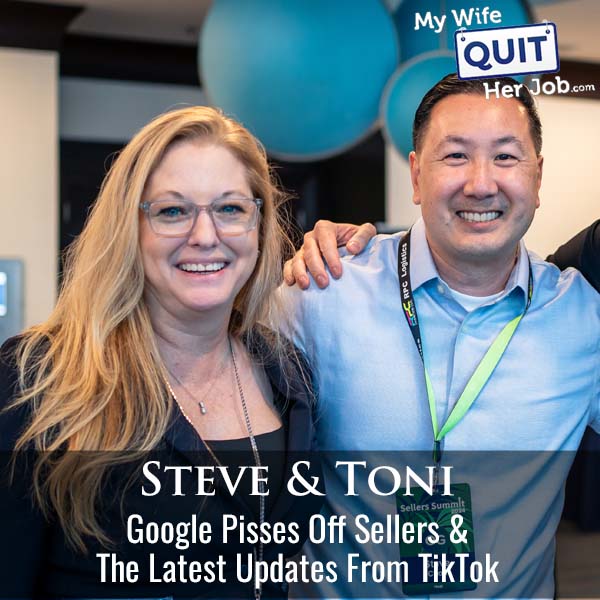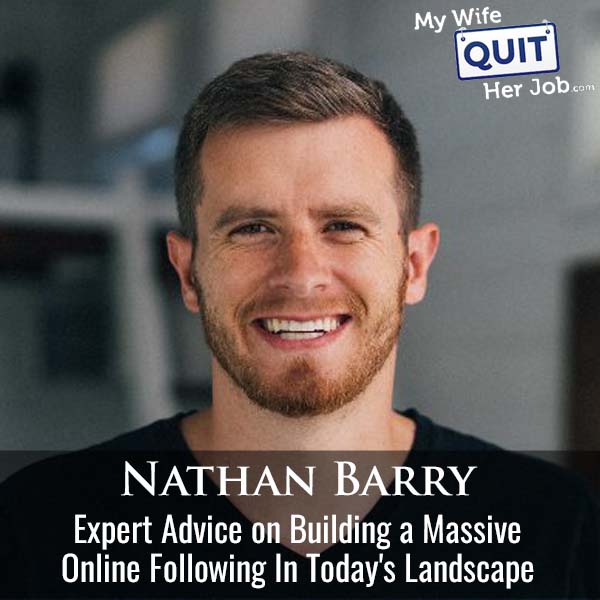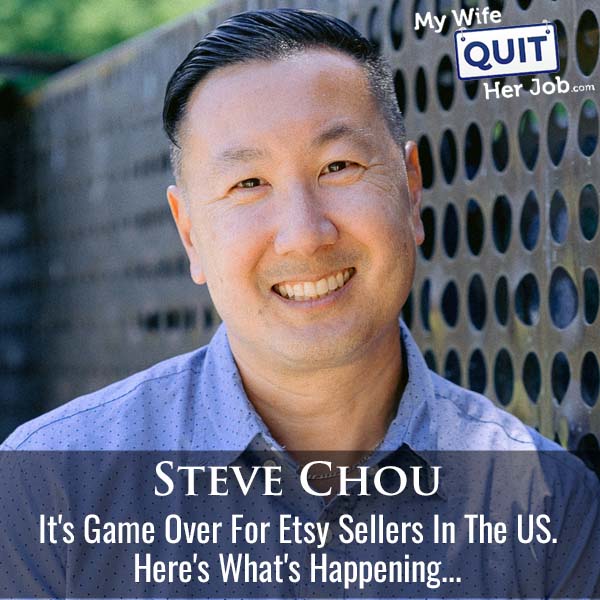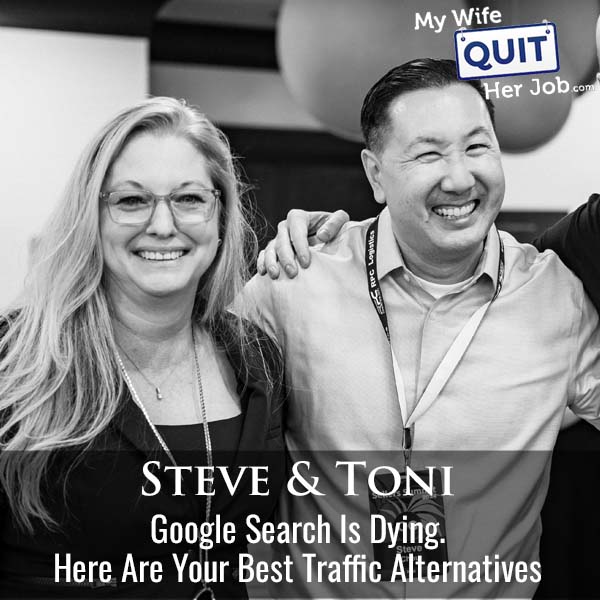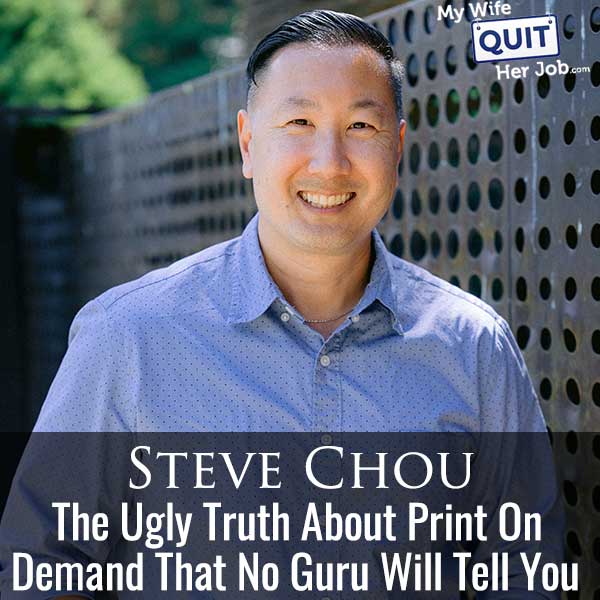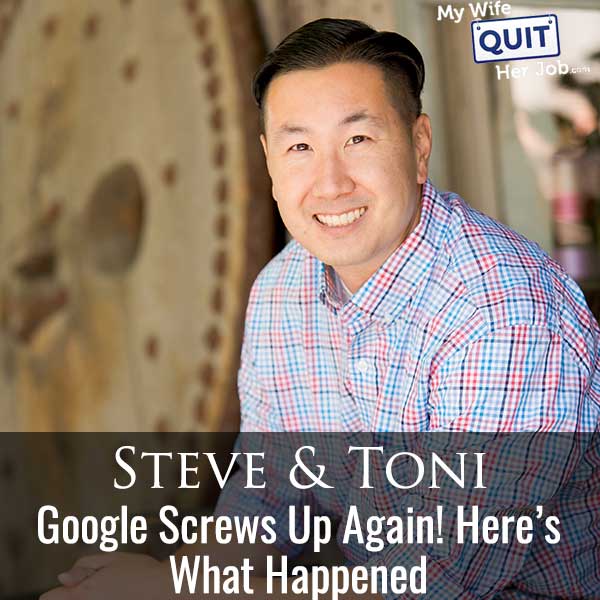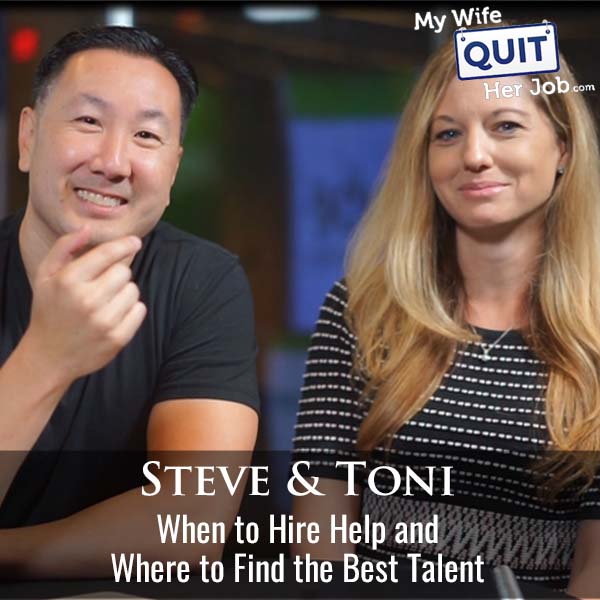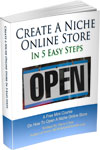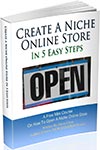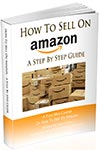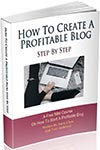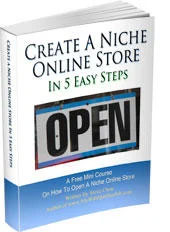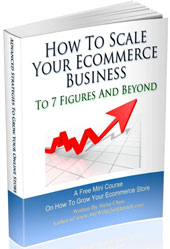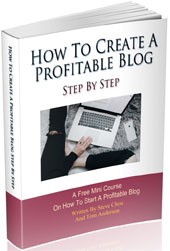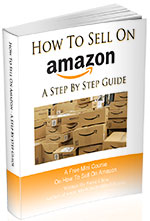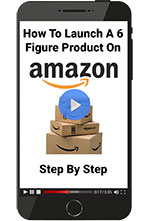Podcast: Download (Duration: 44:12 — 50.9MB)
In this episode, Toni and I dive into the strategies that successful businesses use to turn first-time buyers into loyal repeat customers.
You’ll learn practical, no-nonsense tips for building stronger customer relationships and increasing repeat sales. Whether you’re just starting or looking to refine your approach, these insights will help you boost your bottom line and create lasting customer loyalty.
What You’ll Learn
- The best way to get repeat business
- How to give out discount without actually giving out discounts
- The right way to run a loyalty program
Sponsors
SellersSummit.com – The Sellers Summit is the ecommerce conference that I’ve run for the past 8 years. It’s small and intimate and you’ll learn a ton! Click Here To Grab The Recordings.
The Family First Entrepreneur – Purchase my Wall Street Journal Bestselling book and receive $690 in free bonuses! Click here to redeem the bonuses
Transcript
You’re listening to the My Wife Could Her Job podcast, the show where I cover all the latest strategies and current events related to e-commerce and online business. Today, Tony and I are going to talk about the best way to get repeat business for your online store and give out discounts without actually giving out discounts. But before I begin, if you haven’t picked up my Wall Street Journal bestselling book, The Family First Entrepreneur yet, it’s actually available on Amazon at 38 % off right now. My book will teach you how to achieve financial freedom by starting a business that doesn’t require you to work yourself to death.
00:29
Plus you can still grab my free bonus workshop on how to sell print on demand and how to make passive income with blogging, YouTube and podcasting when you grab the book over at mywifequitterjob.com slash book. So go over to mywifequitterjob.com slash book, fill out the form and I’ll send you the bonuses right away. Now on to the show.
00:52
Welcome to the My Wife Quitter Job podcast. Today we are gonna talk about loyalty programs. And the reason why it’s top of mind for me is because I completely rewrote the loyalty program for Bumblebee Linens this past week. And I’m really into it right now. And Tony does a lot with loyalty programs. So I think it’d be an interesting episode, especially since Black Friday is kind of around the corner now too. Yeah. First of all, I…
01:19
I feel like you’re downplaying a little bit that you just wrote this in a week. Now, obviously, you are an engineer by trade. You have written many other code for your store and for WordPress and all that stuff. This is something that you have experience in, but I think it’s impressive that you built this in just about a week’s time. I was telling you this before we started recording. ChatGPT coded like 70 % of it.
01:46
Yes, but you had to have the knowledge to get Chat Cheapie Tea to do the right thing. Yeah, the whole time I was thinking to myself, man, almost anyone can create an application like this now with as long as you can read code and maybe there’s a big asterisk next to that. Yeah, there is. I was just telling Tony this just now. The last piece, which I hadn’t implemented until the very end, was sending all the information from my loyalty program to Klaviyo.
02:14
And I was like, great, now I need to read all the Clavio docs and everything to figure out how to send this information. But I just went up to ChatGBT and said, hey, these are all the fields of my database that I need to send over Clavio per customer. Can you write the Clavio code for me? And it did. And it actually worked with very little modifications. Yeah. Which I thought was just amazing. I feel like with ChatGBT, I can literally write almost anything pretty quickly.
02:43
Yes, not to derail the topic because we are talking about loyalty programs today. But a lesson, I think, to be learned in this for anyone, even if you don’t know code, is thinking about how AI, chat GPT, whatever tool you’re using can make you more efficient and productive. Like if you wrote programs for a living, right, like you were a developer and you just worked like freelancing, right, like you were on Upwork. Think about how many more clients you could take, how much more money you could make.
03:13
using this. Same thing like for me, I write emails for people, right? I write copy. How much more can I do when chat GPT is feeding me the ideas? I never use chat GPT word for word, but if I’m like stuck and things like that, like it shaves a lot of time off the amount of work that you have to do. So think about whatever business or industry you’re in, how you can use it to make you more productive or just more efficient, right? So you have more time back. Yeah, but we’re not
03:42
going to talk about coding or AI. That’s probably a topic in another episode. Let’s just talk about loyalty programs. So most of you guys probably don’t know took you so long? What took you so long? I actually had a loyalty program for a long time. I did. It was actually implemented on many chat. Hold on. Was it a loyalty program for frequent brides or heavy criers? Which one? Divorce again? Join our loyalty That was my automated email. Hey, you still married?
04:11
Yeah, it’s not. And you plan on getting married again. Husband number seven coming along. Anyway, you had it on many chat. I did not know that. did because it was a chat bot and it was all automated and everything. And the only reason that I put it on there is because that I didn’t want to write all the code involved in a regular thing. So I just had many chats store all the loyalty points, customer profiles and everything. And it was completely automated. It was great. Yeah. But it you know,
04:41
Over the years, Facebook changes, they nerf their messenger and everything. So it’s actually been broken for the last, I don’t know, year and a half, maybe two years. So I was like, okay, I got to do this again, but this time I’m going do it right. I’m going to code it on my own site. But let’s talk about the benefits. Back when my old loyalty, this new one’s way better by the way, but back in my old one, what I liked was I could give out reward points that
05:11
felt like money to people and they would buy because of these points when in fact it didn’t cost me that much money at all. That’s the beauty of it I think. Aside from the loyalty part. Aside from getting people to come back and make a purchase. Yes. I think that’s the biggest. We talk a lot about how do you run a business where you’re not offering discounts and sales all the time. Yes. In loyalty program, loyalty program and free with purchase to me are the two
05:40
like the two number ones, right? So either finding that item that costs you 50 cents to a dollar to $2 that has a perceived value of 29, $30 or the loyalty programs. Those two things are to me the best way to drive purchases without discounting. And the thing about the rewards points is to me they feel a lot like the gift card game, right? Yes.
06:05
where how many times do people buy gift cards and lose them, forget about them, don’t use them, move, they don’t live by whatever store or restaurant that was. Same thing with rewards points. How often do people redeem them? So even though they’re trying to earn them, the redemption rate is never, you’re never getting 100 % redemption rate on the points.
06:30
That is correct. And I think a good redemption rate is something like 60 or 70 % based on what I was on my research. So yeah, there’s a lot of unused points. I think the other big benefit is it gives you an excuse to email a lot more without really discounting. So just to give some perspective, I think the typical rewards program out of the box gives 1 % of the purchase back in dollars.
07:00
Okay. I think if your margins are higher, it can be upwards of 10%, but most people fall under, I’d say, the 3 % range. Yes. Before we go any further, I just want to talk about the cost of this as a business owner, because this is one of the main reasons why you coded it yourself. What I don’t want to do is get everybody hyped up, and then they’re to go look at the app, and they’re going to be like, crap, this is expensive.
07:29
Just on the net, we’ll just get the negatives out of the way. OK, sure. If you’re on Shopify, BigCommerce, you’re going to have to use a plugin to do this unless you have the ability to code something. So chances are 95 % of you guys are going to need to use a plugin. The most popular one, I think, out there is smile.io. We’re not affiliated with them or in any way.
07:51
Obviously, Steve built his own. Yeah, I’m not. When Steve launches his, we will definitely be offering you guys a nice discount code for the first month. But anyway, the base plan of Smile.O is $49 a month. Now, I will tell you, as someone who uses Smile.io has used it for a long time, it worth every penny of that $49 a month. We make so much more than that, you know, from just the loyalty program, getting people to buy. The next level is
08:21
$200 a month. So that’s expensive, right? If you’re just getting started, $200 a month is a lot of money if you’re not generating a ton of revenue. And then they have the plus plan, which is $1,000 a month. And I would say, cause we all, also know that a lot of people’s personalities is like they go all in right with the plus plan. They’re like, I want every feature because with each level too, you get more features and the features are cool, right? Like let’s, let’s, let’s admit that like the stuff that you can do it, that’s pretty cool.
08:48
So that thousand dollar a month plan, while very, very expensive, has a lot of cool things that you can do with it. Please don’t start with that plan, right? If you’re just getting started, because in order to like maximize the worth of that thousand dollars, you have to be really focused on getting people excited about your program and talking to them and emailing them on a regular basis. So just so you guys know like the price points of what we’re talking about, you know, 50 to $200 a month is probably where you’re gonna be starting.
09:17
to get this implemented in your business. So what’s ironic about all this is I was actually willing to pay $50 a month. Yeah, because $50 a month seems okay to me. That would have stopped me from coding this up myself. Yeah. But then they kind of nickel and dime you with the features. Yes. And all the cool stuff is minimum 200 bucks, I would say. Yeah, 200 bucks is where you start. The really cool stuff is 1,000. I was like, well, that’s where I draw the line. I’m doing this.
09:46
Well, $1,000 a month, you have to be making $200,000 $300,000 a month in your business to me to accept that price point, which there are a lot of people out there making that. We can talk about attribution and the metrics you look at, but I actually spent a lot of time coding up all these graphs and everything just to make sure that this is worth my time, ironically. You spent time coding to make sure it was worth coding.
10:14
I love it. But well, let’s just talk about the benefits first. Yeah. That you see. I think the primary benefit obviously is making more money and making sure that people continue to shop. But just digging deeper into that, I think that the biggest reason for me to do it is for me to be able to make more money off of my Klaviyo. Yes. It just gives a lot more lifetime value from your email subscribers because it just gives you more excuses to email.
10:45
Yeah, I totally agree. we we email our people a lot, like in general, but we also talk to them all the time about their rewards because we want them, obviously, to take all those actions to, you know, shop again at the store. Yeah. So let’s just give the audience an idea of some of the things that you run on your emails to get people to redeem loyalty points or accrue loyalty points.
11:15
Yeah, before we do that, can we real quick, I’ll talk about how people get points. Sure. Yeah, yeah. Because yeah. So and and you when you sign up with any of the programs, but like I’ll just use smile because that’s what we’re using. You know, you set up what you want to award people for what they do. So for us, and this is obviously just this one business. So you have to do what works in financially works for your business. So you get three points for every one dollar you spent. So that’s our that’s our point award.
11:42
If you write a product review, you get 250 points, because we want product reviews. So we had to make that really, really valuable. If you share a product or anything on Facebook, that’s 50 points. When it’s your birthday, so we want you to give us your birthday, obviously, so we have more information about you, which we will use an email, right? So all of this is also tied to email, right? Celebrate a birthday, 500 points. So give us your birthday, we’ll give you 500 points. Just for signing up, we give you 200 points off the bat.
12:11
and then obviously Instagram, like on Facebook. So we award points based on the actions people take. And then once we get them in, so once they sign up, the nice thing about these programs is the points are added automatically. So you don’t have to do anything as the business owner to add points to people’s account. So if they make a purchase, the program does that automatically, they share, program does it automatically. And what’s really great is if you’re on Klaviyo,
12:40
all of this integrates with Clavio. So there’s actually basically a code you drop into your emails that will show people how many points they have. This is a huge motivator. The one thing that I do though, and this is just a little email tip for you guys, is that I separate people from having points and not having points. Because if they don’t have points, it actually shows up kind of funny. It’s like you have null or you know. Yeah.
13:08
And it’s like, that’s not really encouraging for people. So those people actually get a different worded email where there’s a little paragraph about how they can get points. And usually these are people who have never shopped before, right? They’re just on the list, but they’re not customers. Cause once you shop, you have points basically. Or they haven’t signed up for the program. So just when you’re sending emails out and you’ve implemented this, remember that there are people that are on your list that don’t have points and you can create a segment of those people.
13:33
But anyone that does have points, wanna make sure at the top, we usually put it at the very top of the email right under the header of the brand is yippee, congratulations, woohoo, you have X amount of points in your account. So those go in a lot of emails just about, not about the points program at all, right? Because when you think about it as a shopper, right, and you get an email from a brand and they’re having their Black Friday sale or they’re offering a new product or something like that and you’re like, oh wait, I’ve got enough points to get this like,
14:02
for $5 off or something like that. So a really nice feature, I think all of the main tools do this for you, but basically you can integrate this in any email that you send where you show them their point total. Highly recommend doing that.
14:17
I just wanted to take a moment to tell you about a free resource that I offer on my website that you may not be aware of. If you are interested in starting your own online store, I put together a comprehensive six day mini course on how to get started in ecommerce that you should all check out. It contains both video and text based tutorials that go over the entire process of finding products to sell all the way to getting your first sales online. Now this course is free and can be attained at mywifequitterjob.com slash free.
14:46
just sign up right there on the front page via email and I’ll send you the course right away. Once again, that’s mywifequitterjob.com slash free. Now back to the show.
14:57
So one of my other motivators for writing my own was because we’re going to be doing a lot of short form video for Bumblebee. And I have a lack of user generated content right now. So I specifically made hooks in my program to allow people to upload video for an insane number of points or just upload a photo of them holding the product for a lot of points and just testimonials in general.
15:22
Product reviews, I don’t feel like I need to incentivize them. We get product reviews like every day on their own. Maybe I’ll change my mind on that and incentivize them for that. But in general, just for user-generated content, which is I think very important these days for any branded e-commerce store, you can use your loyalty program for that as well. It’s actually a great idea. We don’t use the loyalty program for user-generated content. We actually run like a giveaway every month.
15:52
but I actually really like the idea of, I might see if we can change that for us because I like the idea of just getting points no matter what. It’s not like a crap shoot if you win or not. For our customers, once you become a customer, you’re going to get in that post-purchase flow, which I’m sure most of you guys have already set up. About two to three weeks into the flow, because they’re getting confirmation orders shipped, orders delivered.
16:19
We send some order specific, like if you ordered certain products, because we sell curriculum, so like how to use the curriculum type stuff. We let people know about the joy, we call it joy points. We let people know about the rewards program. So, you know, I think it’s probably about a two week period. So they, at this point, they’ve already received the product. Hopefully they’re thrilled. And then we’re like, hey, you probably didn’t know this, but you can earn rewards on your purchases. And we basically outline the entire program to them.
16:47
Now, if they’re already a member, if they’re already a previous customer, they’re going to get a slightly different email reminding them that they’ve earned the points, right? So new customers are getting the, you might not know, but you can just share us on Facebook. And look, you’re going to get this point. We don’t have your birthday yet. Give us your information. so that’s the first time people are introduced to the, unless they find it on the website, that’s the first time they’re introduced to it via email. Yeah.
17:16
Then for ours, which hasn’t officially launched yet, we’re to collect anniversaries because we’re in the wedding industry to provide some amount of points because the second anniversary item just happens to be a cotton anniversary. Oh, is it? The two-year anniversary is cotton? Yes, happens to be cotton. It works out. What’s the polyester anniversary? Is that six months? We don’t sell anything polyester.
17:45
Darn it, darn it. That’s the first time and that just gets the nice thing about most of this is that it’s literally in your flows. You’re going to write that email one time and then you’re never going to, honestly, you’re probably never going to touch that. I think I wrote that email three years ago. I’m trying to see if I can see when I wrote it. I don’t think I’ve touched that emails in three years. It probably needs an update actually now that I’m saying this. Just in case you guys are a little skeptical on
18:15
just loyalty programs in general, which I was, admittedly. Until my wife pointed out to me, hey, do you realize that we only stay in Marriott hotels? Do you realize that we only fly certain airlines? And do you realize that you only go to Starbird, which is this chicken place right down the street, because they have a loyalty program? And I was like, yeah, you’re right. Even for stupid stuff like food, I’m much more tempted to go someplace because I gather points and I can get something for it.
18:44
I just looked, I’m literally getting 1 % back at this chicken place. Yes, it’s not a financial game changer for you. It’s not a financial game changer, but psychologically for some reason I’m drawn to it. Even in our courses that we run, we give out points for just making progress and people really want those points. I get emails at least once a week about, for some reason I didn’t get my points updated in the last office hours, can you update them?
19:14
Yeah. And it’s crazy. Yeah. So I just I’m pulling the stats right now so you guys can see. When we send that email out about two weeks post purchase, you know, people are are most likely not going to buy right then from us. Right. So this is not like a huge money making email. However, the open rate’s 50 percent. The click rate’s almost four percent. And it does generate a very small amount of revenue.
19:41
For the people that are new and don’t even know about, that’s for the people that have used the program before. For the people that have not used the program and they’re getting introduced to it, the click rate is almost 10%. So for deliverability and just email health overall, these emails are great for just getting people. And think about it, these are people that are like now two weeks post-purchased, right? They have the product, they’re probably using it, they’ve forgotten about you at this point.
20:09
So like just that little nudge, that little reminder, staying in their inbox and not their promotion box, right? Like all those things matter. So if you don’t have this in your post purchase, I would definitely set it up because it is a very engaging email. And obviously you want to separate it by zero points and plus one, you know, and that way you’re sending a different message to people. So I spent some time writing this report for me, but I’m just curious if Smile has it already.
20:39
Does it tell you what your conversion rate, how it increased over time? Or the revenue per recipient? I know it tells you the total value of the loyalty redemptions. But I’m curious what metrics they use to get you really excited to make sure it’s worth $1,000 or $200 or whatever you’re paying them. I’m pulling it up right now. I don’t ever spend any time in the Smile Dashboard.
21:08
That might take me a minute to navigate it around. That’s okay. But the other thing that’s great is, and the only reason why I brought Black Friday up is because Black Friday is coming around and most people tend to discount insane amounts. in an episode that I recorded a long time ago, I think with you actually, where we talked about the true value of a discount is much more than you think it is. And usually for just something,
21:35
Even that’s like something that’s like a 20 % discount means you have to make double the sales just to even break even in a lot of cases. So instead of running a killer sale, it might make more sense to run a killer points promotion. Yes. Okay. I think I have a little bit of data for you. Okay, cool. And we just ran a killer points promotion so I can talk about that in a second. Okay. So last 30 days, the points earned for the, and this is a seven figure store. So just so you guys have some reference.
22:05
Um, previous 30 days, the points earned 2.7 million points earned. Um, yeah. Redemption rate is 7.3%. Wow. That’s really low. Yes, really low. But if you also think about the fact that they earned a lot of points last month, let me look for a further month. Cause like that was a lot of points. So, you know, could be that if you go further back, you know, people aren’t going to buy right, right again, if they earn those same points.
22:32
So it looks like the average is about 9.5 % redemption rate. So our redemption rate is for every 100 points, you get a dollar. Every 100 points you get a dollar, okay, right. Yeah, so that’s the redemption. So 500 points, $5. And how Smile does is basically like a gift card. So one more email to put in a flow, and this is actually a separate flow.
22:59
that we have running, it’s just the rewards flow. It’s like what we’ve named it is that, and I stole this from Chubby, so I cannot take any credit for this. The swimwear, the short, the men’s brand. When people hit 500 points because that’s $5, right? Like to me, that’s a significant amount of money for our customers, like $5 coupon. They get an email. So automatically triggered. So you set up in Klaviyo a trigger when someone’s points balance equals 500, trigger this flow.
23:28
So the flow is basically like, it’s literally like fireworks and like confetti and streamers. And it’s like, wow, you’ve earned, you’re at 500 points. Like you’ve climbed Mount Everest basically is what we’re the vibe we’re going for. Um, and so that, and then we’re like, what can you buy? know, um, it’s like Chuck E cheese. What, what, what pin from China that doesn’t work? Will you buy?
23:53
But we know that $5 is like a threshold that moves people and that people earn, you know, there’s a significant enough amount of people who have 500 points to where like we’re not sending the email to one person a month.
24:06
But that is, and it’s funny, cause when I got that email from Chubby’s, what did I do? I immediately went to Chubby’s and I bought a bathing suit for one of my kids or something. don’t remember, but like I immediately spent my points, right? It’s like when you’re on the Chick-fil-A app, I know you guys don’t have as many Chick-fil-As as we do, but you’re like, I get a free chicken sandwich. Like we’re going to Chick-fil-A today. I’m also going to spend $57 on food for everybody else, but I got a free sandwich.
24:32
But yeah, so set up that flow too, because that is one, once again, automated. And then we send, think two more, if they don’t make a purchase, we send, I think two more, I’m gonna check right now, two more emails that basically remind people to make a purchase. I think in general, you want people redeeming stuff. And I think you’re supposed to email any time that they’ve made any sort of reward. And I think five bucks just happens to be your lowest one, right? Yeah, yeah. On your thing.
25:02
The other thing that I was that I’m implementing with mine is VIP tiers So I know that just statistics say that if you can get someone to buy something twice Make it purchase twice then they’re probably gonna be a long-term customer or the chances are really I can’t remember the exact percentages so I was actually gonna create a Tier where they just make two purchases and they instantly get 2x the reward points and then to get the height to the next tier It’s it’s a lot more
25:31
Based on the data, I have to still mine the data to set this up. But that prevents people from just creating arbitrary new accounts and getting points right away as well. Yeah. So I just pulled up the flow. So the first one is that celebratory, you know, good for you. Once again, 70 % open rate, 11 % click through rate. So 0.6 % order rate. Right. So we’re not terrible. Right. People are converting on that. Then we give them seven days.
26:01
And we remind them that we do that. We do a promotion where it’s like you, if you share it, you get, you share a coup, if you share it with your friend, they get a $5 coupon and you get a $5 coupon. That one, that one makes more money, like per person, but like doesn’t have as great of an engagement. Still 55 % open rate and almost a 2 % click through rate. So it’s not, it’s not doing poorly by any stretch. And then if people still haven’t taken action, but they have like,
26:30
over those 500 point, so they’re still at that 500 plus balance. The title of the email is, have you checked your balance lately? I think that’s a great title, right? Like not to pat myself on the back, but I think it’s really good. Once again, 60 % open rate, 10 % click through rate, right? So that’s that sequence when people plus the 500 of reminding them. Cause you do want people to redeem their rewards because that means they’re making it. I mean, the reality is not everyone does.
26:58
but you do want to get them in for that second purchase. Because chances are like if they’ve spent 500, if they have 500 points, they’ve probably ordered more than once. So actually just talking through this out loud, we should probably lower it to like, we should probably have some sort of flow when they’ve hit like a hundred points because that means they’ve made probably just one purchase, right? As opposed to 500. Because 500, you’ve probably had two purchases. Unless you like signed up and shared with a friend, then you could hit 500 pretty quickly.
27:27
So on mine, my minimum is 100 points for $1. And I think I’m not going to allow people to redeem that until their second order. I haven’t decided yet. I haven’t decided yet what I’m going to do. But the idea You have to let them redeem it on their second order, though. No, no, Redeem it on their second OK. OK, yeah. Not their first order. Gotcha. Because I’m giving $200 off the bat, and that’s worth $2. Maybe I would let them. I don’t know. I haven’t decided yet. I don’t have any data. That’s the problem. And you have data.
27:56
Do you have an idea of what people redeem? I don’t think I can, probably I don’t know where to find it. So. And right now you’re judging like the. Oh, I do. I do have it. So you do have it. OK. Yeah. Yeah. So the top way customers redeem is five dollar off. Then it’s ten dollars off is the next one. And those are actually fairly close together. So looks like people are a lot of people are waiting to get that ten dollar.
28:24
And then the next one, which is a third of the other two, is we give you a free Bible study, which is what they sell. that’s the next redemption. then we, I guess, we allow people to redeem at $2. So the $2 off is the, that’s the lowest and that’s like one tenth of the rest of it. So the $5 coupon is most popular, $10 second. Interesting. Okay.
28:49
I think the key here for everyone to realize is you can only use one reward at a time. Yes. Yeah. They don’t stack. So it’s to your benefit to get the higher reward. Yeah. If you’re trying to maximize it. OK, so let’s talk real quick about as I don’t want to run out of time. Let’s talk about when we did the triple points. Yes. So I’m curious because I actually tried something new and I thought it flopped. But then upon further research, I’ve actually once again can pat myself on the back.
29:19
I’m just kidding. So we do this probably, oh my goodness, we don’t do it a lot, two to three times a year. We do like a point blowout basically. So last month we did a triple point redemption or not triple point redemption, triple point earn where you basically earned three times the points on your purchase over
29:49
over a 24 hour period. So it only lasted for 24 hours. Now, one thing about Smile is I actually don’t think you can timer it. ours actually lasted longer because we were like not getting up at midnight to change the thing. just so you guys are like, wait a second, what? Just make it, started at 8 p.m. No one’s gonna be mad at you for getting more points. So I will tell you, let me pull up the email. So I wanna give you guys the actual like.
30:16
metrics on this to see how well it performed. What we do know is this always performs fairly well. Like this definitely gets people to get off their butts and make a purchase. of course, now I had it in front of me and then I got off of it to get the flow and now I can’t find it. Talk for me. Okay. I was going to just say earlier when you were talking about performance of the redemptions on the post purchase, I don’t think it’s a fair assumption to assume that those emails are going to generate money. Right?
30:45
right off the bat, because it’s kind of like a long-term play in a way. Like people have to gather points and then they have to be in the shopping mood. So just the fact that the open rate and the click through rate are so high means that there’s interest. Yes, for sure. So we sent out and actually this is interesting. we ran our biggest sale of the year is in the summer. It’s a back to school sale. And this was actually run during the back to school sale.
31:13
So typically we don’t overlap these with sales, but this sale I actually tested every idea I’ve ever had for email during this sale to see what worked and what didn’t. So we were trying basically everything. So this was actually run during a sale, just so you guys have all full disclosure in this. I only sent it to people who already had points. So these were people that I knew were like interested in the point system. I did not do this to like get people on or get people that hadn’t purchased to make a
31:43
So this went straight just to people who already have points. And we basically tripled their points for 24 hours. I will say the email performed, it only went to like, I’m gonna say it only, it didn’t go to a ton of people, maybe under 20,000. But once again, like decent engagement, especially during the sale when we’re, that’s the other thing, during a sale when you’re sending an email every day, this is a way to get an email opened, right? Because people are like, I know same sale, whatever. But then it’s like, wait, I can get,
32:12
even a better sale, right? Because they’re tripling their points. So the email overall performed probably better per person than most of the other emails we sent. So the email itself didn’t make more money than a lot of other emails, but we sent it to significantly less people. So once again, great engagement, great interest in it. But what I did, which I think this was the like winning idea that I was initially very disappointed, is the day after the sale. So
32:42
Anyone who made a purchase during that day that the points were tripled, they got put in a bucket and I sent an email the next day. So 24 hours later, the point promo has ended. They’ve made a purchase. I’m like, hey, you just made a purchase and earned all these points. Why don’t you spend it while things are still on sale?
33:00
Right? Like, why don’t you redeem it? Right? Because these people already had points. So at this point, they definitely have that 500 points. They have a $5 coupon that you could redeem during the sale because the sale was like automatic discounting, like through a plugin. So it wasn’t like a discount code. So you could actually stack, which is rare. We don’t ever stack. So it only went out to about six, 500 people. No, it up to 500 people. Right? So it was all the people that bought the day before.
33:28
So when I see the email numbers come in, the email made $481 and I was like, boo hoo. I mean, because most emails during the sale make thousands and thousands and thousands of dollars. So I was like, well, that was a dumb idea, right? But I was like, well, not really. It only went to 500 people. So it’s not like we wasted an opportunity. But then when I started digging into the numbers, I was like, but wait a second, know, went to 500 people, seven people made a purchase. So it did convert people.
33:57
But the open rate on that email was 71 % and the click through rate was 20%. Wow. So even though it didn’t drive tons of revenue, which it didn’t really need to, right? Like we’re already making money from every other email during the sale. What it did do was lift my email, like, cause I’m sending two emails a day for 10 days, right? So all of a sudden my emails that are getting like up
34:24
1 % click through rate, .9 % click through rate. I’ve got one with a 20 % click through rate. I’ve got 70, so all of a sudden I’m sending all these great signals again that like, our emails are important, people are engaged, blah, blah, blah. So to me, the email was a huge win because its deliverability was so great, the click through rate was so great, and the engagement was there. So 100 % will do this again. Even though I don’t anticipate it making money, it boosts my engagement, which overall helps my account.
34:54
So definitely something it was an experiment. First, I thought it failed revenue wise, but I’m like, you know what? I don’t really need these people to spend their money today anyway. I’d rather them spend it when things aren’t on sale. You know, but so something to try if you guys are doing this, like it would it’s definitely worth doing because it definitely helps your overall email. So one of the emails, since I’m on that list that you write one email that I particularly liked.
35:22
was one where you stacked three things all at once. that was the email. Oh, was that the one? OK. Yes. Triple loyalty points plus a discount on something. Yes. Plus and a free with purchase. Free something. Yes. And that’s yeah, that was very effective. Like, obviously, I’m not. You almost bought a Bible study. It so close. You almost bought the math curriculum. You were so close to getting it. No, and that’s and that’s one of the things that I like to do with
35:52
points people. So people that already have points, you know they’re shoppers, right? And it’s like, I’ll use myself for as an example, like I am a loyal White House black market shopper. Like that is if I’m going to buy clothes instead of renting them, that’s usually where I start looking. So if White House black market sends me an email and they tell me that like all the summer stuff is on clearance, plus I can get free shipping, plus I have rewards,
36:19
the chances of me making a purchase goes up by about 100%, right? Whereas, and so that, I know that’s an effective psychological technique with customers that, because it doesn’t just work for me, it works for everybody. But it’s like, and a lot of times they’re like, oh, I know it’s your back to school sale, but do you know how good of a deal this is for you? And people need to be told what to do. And during a big sale, during like,
36:46
It’s like Black Friday. It’s like all those studies, because I used to work in like grocery and CPG stuff, right? And all the studies that showed if you give people too many choices, they don’t choose anything. Right. But when you spell things out for people like buy your peanut butter, buy your jelly, buy your bread, that is why they are all in the same aisle. Right. Because you don’t want people to have to make a decision. It’s like, you know, this is you just get it all right here. You don’t have to walk around the store. You don’t to think about things. So when you can send emails like that.
37:15
Once again, the free with purchase on this deal is an item that we cannot sell. It’s literally taking up so much space in the warehouse that we’re, you we did a free with purchase offer in July for it. We basically ran out of the price. So yay, one liquidated product that we couldn’t sell. People loved it. And then, you know, we do the back to school. So every year that’s just going to happen. So we’re already doing that. And then just reminding people like, oh, and by the way, triple your points.
37:45
Huge. Let me see if I can pull up the data on that. But yeah, you have to do that for people. While you’re pulling up the tiers, I just want to say that just having VIP tiers is a huge deal. And I’m just thinking about how we kill ourselves to make Marriott status. Yes. Oh, yeah. And you can remind people like, you you need one more to achieve this status or one more purchase or X amount of points or whatnot. this is about to expire. Do you guys do expiring points?
38:14
We don’t expire points. Okay, so they’re around forever, Yeah, that’s good idea. And a lot of companies do the expiring points. The other thing that I use terminology in these emails is I call it a VIP exclusive. Right. And tell me that doesn’t get you when you get the Marriott email and they’re like, you know, Platinum Elite exclusive or whatever it is. This is how crazy we are with loyalty, though. So FinCon is a conference that you and I both
38:43
have gone to for many years and it’s at a Hyatt this year. PT, what’s your problem? Guess what’s located right next to the Hyatt? Oh, it’s a Marriott. Guess who booked a room at the Marriott? I’m not staying at the Hyatt where I get no benefits.
39:03
four nights away from the next level, right? But yeah, like it works. works. It works. Think about in your own life, like how many things that you, how many apps were you willing to download? How many texts were you willing to sign up for to be able to get your free queso, your free chicken sandwich, your, you know, free shipping, whatever it is. These programs really work. And the best thing that you can do if you’re spending the money per month on implementing them is to email people obsessively.
39:32
about their points, how they use them, how they earn them. Like we spell it out so clearly for people. It’s like, click here, do this, stop what you’re doing because people are busy. They’ve got a lot going on. I mean, it’s like when your kids are little and they’re trying to talk to you and you’re like on the phone and you’re also doing like two other things and it’s it’s like, wow, wow, wow. You don’t hear them. So giving this is explicit as possible to people. Like you just have to really put it out there and
40:00
It were they work. You get you get repeat customers, which I think is the biggest thing, right? Getting people to make that second purchase. And then also just making people feel like like think about you and I, like we’re both Marriott people, right? We’ll tell everybody to join Marriott over World of Hyatt, World of Hyatt. Who wants to join that dumb program? Right. Like like we talk about the Marriott program to other people. We’re their best salespeople. Yeah. You know, it’s like I remember I went somewhere with someone. It was to Chick-fil-A. They didn’t have the app. And I was like,
40:30
How are you even eating here? Like it was to me, it was like a crime that they weren’t willing to like get the points. So like you can turn your customers into like your number one advertisers by having a really well done program and letting people know all the benefits that go along with it. Yeah. So the way that I wouldn’t sign up with the program unless you have an email marketing. Yes. It just they both amplify each other. Yeah. They have you have to have them hand in hand. Yes, that’s correct.
40:59
And so many people focus so much on getting new customers that they neglect their existing customers. And it’s the existing customers that going to be making you the money. 36 % of our revenue is from existing customers. Yeah, we’re at about 50. Wow, 50. Your niche makes sense, Yeah, curriculum, obviously, people come back. For mine, it makes less sense because weddings, unless that joke we had in the beginning. It works. It works. But it does work.
41:31
When would you sign up for one, actually? How much money do think you should be making to make it worth your while? Assuming it’s like 50 bucks a month, let’s just Yes, the bottom tier. Yes. Oh, this is always so tough. It’s tough, right? I would say six figures, right? I don’t know. Six figures. Maybe sooner. I’m trying to do the math on my head. I would do it sooner. I would have at least 1,000 orders a month.
41:59
a thousand orders a month. I would do it more on orders than monetary because orders is more like if you have thousand orders, you have about a thousand customers a month or you have 800 customers a month, especially if you’re new. Most of your customers are going to be new. I would also say if you’re paying for customers, if you’re paying for ads, if your primary way of getting customers is ads, then I would probably and you see that picking up.
42:27
You have 400 customers and 500 orders, then 600 orders, right? And you’re seeing that. I would probably really start digging into like when’s a good time to do that. Because you want to be able to like you’re paying for these people. So now keeping them becomes so much more important, right? If you’re spending 10 bucks to get the person, you would love for them to come back or like do the other things that we reward for, right? Sharing it, giving the $5 coupon to a friend. So I think it’s also a little bit dependent on how you’re getting your traffic.
42:56
to your site. I think if paid acquisition is your main channel, then I think you should get it. Just if paid acquisition is your main channel, you’re probably spending thousands of dollars a month anyway. It’s 50 bucks a month. It’s a drop in the bucket. You should definitely do it. Yeah, it’ll improve your ROI. Yeah. But before you do it, just like Steve said, I cannot hammer this enough. Have your emails in place. Have your plan in place. Because what I hate for people to do is spend the money and then like let it languish. It’s kind of like the same thing with affiliate programs, right? Like you don’t want to be you don’t want to get that.
43:25
that accounting at the end of the year, right? And you’re like, spent $600 on a loyalty program that I never told anybody about, right? So make sure that before you sign, that would be that Mike, the other caveat before you sign up, have your email templates ready, have your strategy, you know, just be ready to go with it because right off the bat, you want to be getting your money’s
43:50
Hope you enjoyed this episode. One thing that I always like to emphasize is that repeat customers are the lifeblood of any business. For more information and resources, go over to mywipecluderjob.com slash episode 554. And if you’re interested in starting your own eCommerce store, head on over to mywipecluderjob.com and sign up for my free six day mini course. Just type in your email and I’ll send you the course right away. Thanks for listening.
I Need Your Help
If you enjoyed listening to this podcast, then please support me with a review on Apple Podcasts. It's easy and takes 1 minute! Just click here to head to Apple Podcasts and leave an honest rating and review of the podcast. Every review helps!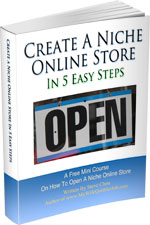
Ready To Get Serious About Starting An Online Business?
If you are really considering starting your own online business, then you have to check out my free mini course on How To Create A Niche Online Store In 5 Easy Steps.
In this 6 day mini course, I reveal the steps that my wife and I took to earn 100 thousand dollars in the span of just a year. Best of all, it's absolutely free!

